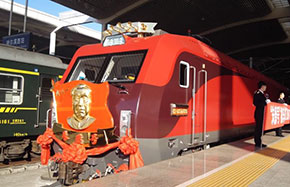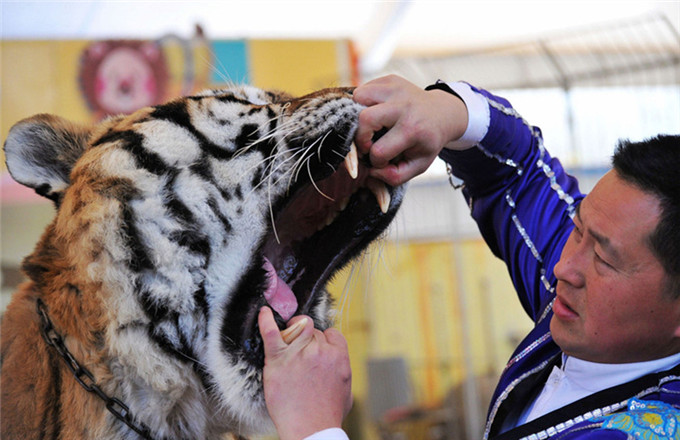Hidden treasures
It's a part of the country usually overrun with tourists, but Wang Kaihao discovers a quiet corner of Longshan county and is quite taken with its many charms
After sunset, the ancient town of the Tujia ethnic group falls into complete darkness and total quiet.
No entry tickets, no flocks of tourists. Unusually, Liye has no karaoke venues, bars or nightclubs - all ubiquitous in ancient towns throughout China.
Most people visiting Xiangxi (an area in the west of Hunan province) swarm to Fenghuang, a nearby old town famous for being the birthplace of Chinese writer Shen Congwen. But we are lucky enough to have a different and more intimate experience of traveling in Longshan county.
After being woken by the twitter of birds and crowing of roosters, we begin our day in Liye jogging beside the picturesque Youshui River. The clean air is a surprising luxury for those of us used to checking the pollution report before participating in any outdoor sports.
Like other rural places throughout China, many locals from Liye leave the town to look for jobs in big cities. Life in the town remains relaxed. Older people gather to chat or play cards under the eaves. Some carry babies in baskets and hurry to nearby markets. We are outsiders threading the well-preserved old streets surrounded by rocky walls and traditional two-story wooden houses.
Most of the houses were shops in the old days. The upper floors were used for storage. Though they are far removed from the hustle and bustle, the houses hint at the prosperous past of Liye, which was once the most important trading port in the west of Hunan.
Different architectural styles in southern China can be found: from Anhui, Jiangxi, and Sichuan provinces. There is even a Western style villa in the complex. It is rumored to be the property of a merchant who has a major business in Shanghai. The closed doors leave much room for imagination.
Liye means "to explore" in Tujia language.
Rich with history
The current layout of Liye was formed during the reign of Yongzheng (1723-35), and most surviving houses were built in the late 19th century. However, the town's history is much older. I didn't expect to find a great museum in such a small town with only 10,000 residents, but there is one - Liye Qin Slips Museum.
In 2002, archaeologists unearthed a city relic and more than 37,000 pieces of Qin Dynasty (BC 221 to 207) bamboo slips from several abandoned wells in Liye's riverbank. Only 10,000 Qin slips had been found in all of China prior to this major discovery.
When the war at the end of Qin Dynasty finally reached this town of crucial military importance, local officials decided to destroy all their documents by throwing them into wells.
Those slips record the history and social systems of the Qin Dynasty like an encyclopedia. They even include the world's earliest multiplication table, which is among about 300 slips now exhibited in the museum.
The areas surrounding Liye is more like a living museum. A village cluster called Rebala is generally considered to be the best preserved Tujia ethnic group community in Xiangxi.
A rugged one-hour trip in a minibus in the rain from Liye to Rebala is unpleasant. However, I soon find myself being welcomed by hospitable villagers toasting rice wine by the front gate of their fortress and suddenly the rough journey feels worthwhile.
The rains stop and we relax enough to cross a timber bridge across the water, and take a walk amid traditional Tujia diaojiaolou (literally means "foot-hanged buildings"), and view the backdrop of green mountains half-shrouded in fleecy mist.
Villagers do not hesitate to perform folk songs for us. A local opera called laliuzi without any lyrics is interesting. Performers only use gongs to create different sounds. More than 70 different musical scores of the opera survive.
When the short performance ends, we cannot help but join the Tujia people's famous hand-waving dance, not to mention a fabulous dinner in the village. We immediately fall in love with the iconic Xiangxi bacon. I have heard about the delicate Tujia tapestry for a long time and so I feel slightly disappointed to discover the village's leading tapestry weaver is in the city for a conference about intangible cultural heritage.
Countryside excursions
After a rest stop in Liye, we set off on another excursion, zigzagging north to Bamianshan Mountain, part of Wulongshan Mountains, which I first discovered via a popular '80s' TV series, Wipe Out the Bandits in Wulongshan.
Karst topography means this trek is a perfect combination of treat for the eyes and test for the legs. There is a relatively plain area in the valley, that the locals call" grassland in the air," but what attracts me more is a sink hole, otherwise known as "zishengqiao" (a bridge formed by itself).
In the early 1950s, there was a major campaign against local bandits in Xiangxi, and the final battle was in Bamianshan. It is said that 3,000 bandits mysteriously disappeared into the mountains, sneaking into the caves.
After some consideration, I decide not to explore deep into the huge caves because of a lack of preparation. Our local guide says he once went into the cave, and found pots abandoned by the bandits, even after two hours' walking.
No one knows what the caves lead to. The guide jokes the other end of the tunnel is Colorado.
The pristine preservation of what we have seen in Longshan is likely thanks to inconvenient transportation. The county's income per capita is less than half of China's national average, but there is some good news for locals who are hoping to shake off poverty: Acompany plans to build infrastructure turning these semi-secluded places into popular tourist attractions by 2017.
And we all know what will happen then.
wangkaihao@chinadaily.com.cn
 |
|
Traditional handwaving dance of Tujia ethnic group in Rebala.[Photo by Wang Kaihao/China Daily] |


















